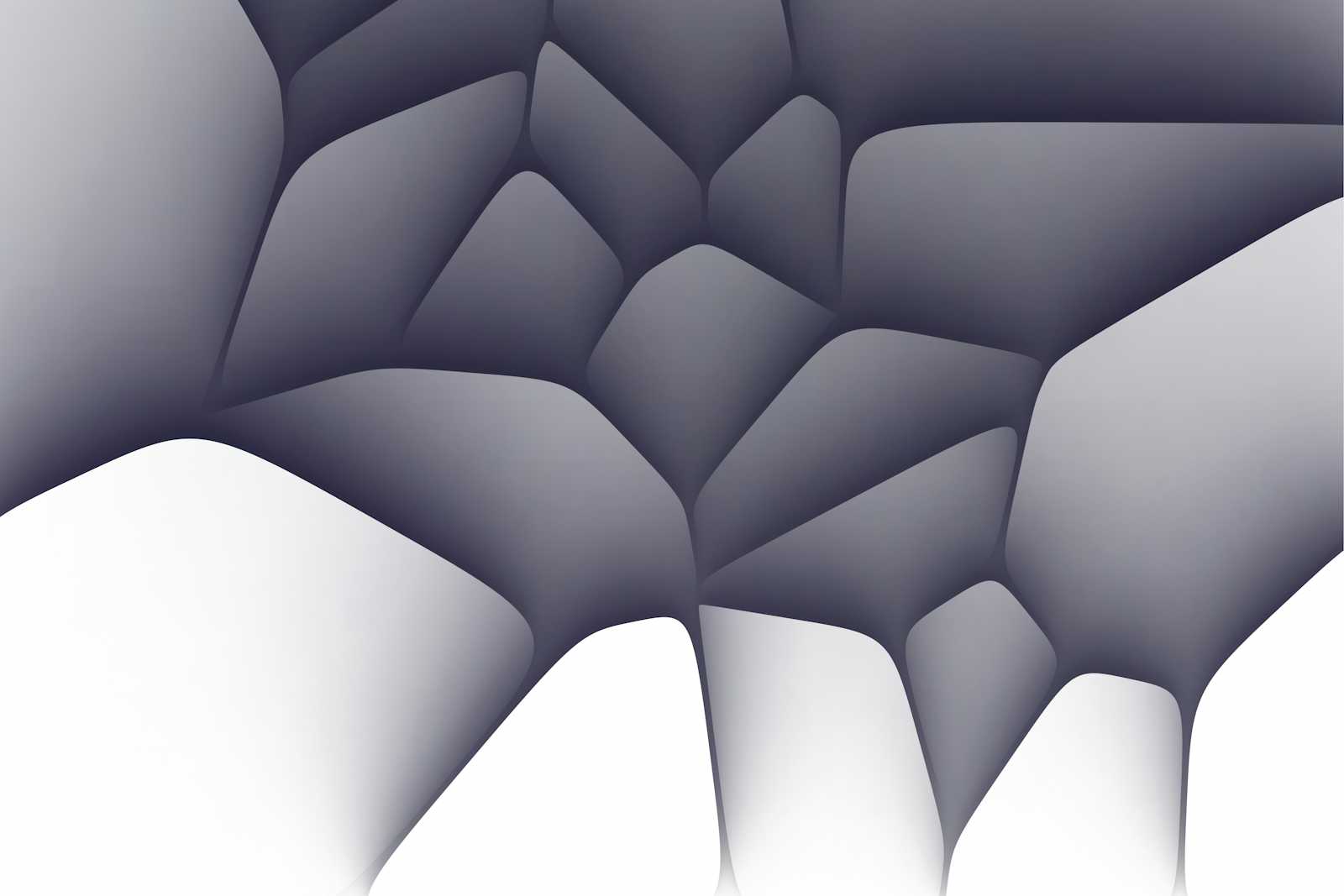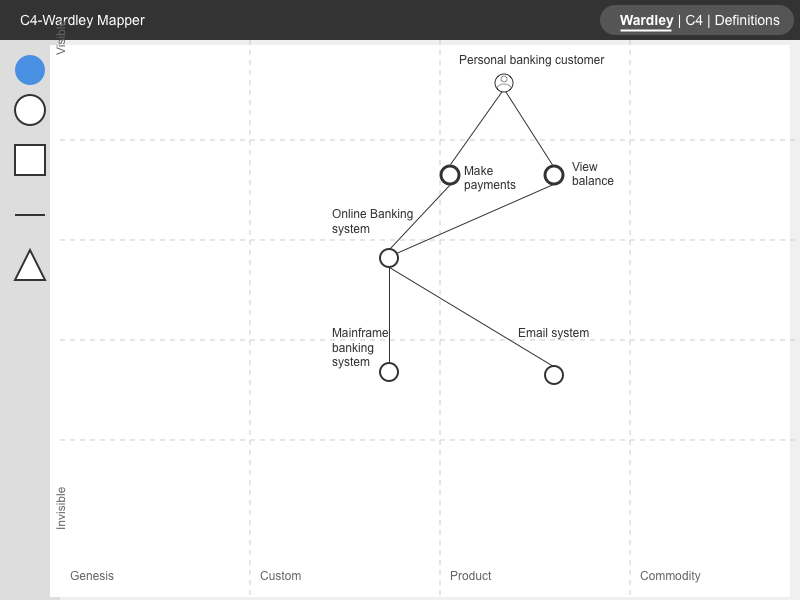Bridging Strategy and Architecture
 Petros Lafazanidis
Petros Lafazanidis
C4 Model and Wardley Maps
I just finished reading Visualizing Frontend Architecture by Max Ferreira, where he suggests an interesting adaptation of C4 models for frontend architecture. Max essenitally keeps levels 1 and 2 unchanged but adapts level 3 to represent modules (to avoid confusion with the how the word components is used in front end) and proposes UI breakdowns for level 4 as a replacement for code diagrams. It's an interesting read in its own right so go ahead and read it. But Max got me thinking about another adaptation; how could C4 be used in conjunction with Wardley Maps, another favorite tool of mine.
As a software engineer who's always looking for ways to bridge the gap between high-level strategy and nuts-and-bolts implementation, I've found both C4 and Wardley Maps very useful tools. Max got me thinking though could these two powerful tools work together to create even more insight? Let's explore how these frameworks complement each other and how teams can leverage them for better outcomes.
Quick Refresher: C4 Model
The C4 model, created by Simon Brown, is a way of visualising software architecture at different levels of abstraction. The four C's stand for:
System context: The big picture view of how your system fits into the world.
Containers: The high-level technology choices (e.g., web application, mobile app, database).
Components: The logical components and their interactions within a container.
Code: The lowest level, showing how a component is implemented.
C4 helps teams create a shared understanding of the software architecture, facilitating better communication and decision-making.
Quick Refresher: Wardley Maps
Wardley Maps, developed by Simon Wardley, are a strategic planning tool that helps visualise the structure of a business or service. Key elements include:
Users: The people or entities that consume the value chain.
Value Chain: The components needed to meet the user's needs.
Evolution: How components change over time, from genesis to commodity.
Wardley Maps enable teams to anticipate market changes and make informed strategic decisions.
Comparing C4 and Wardley Maps
While these tools serve different primary purposes, they share some similarities:
Both are user-centric, starting with the needs of the user or customer. Both use a hierarchical structure to represent systems or value chains.
However, they also have key differences:
Wardley Maps include an evolution axis, which is not present in C4. C4 provides more technical detail, especially at the component and code levels. Wardley Maps focus on strategic positioning, while C4 emphasises architectural structure.
Combining C4 and Wardley Maps
One of the most exciting aspects of combining C4 and Wardley Maps is the potential for cross-disciplinary collaboration. Imagine a workshop where product managers, strategists, architects, designers and developers come together to map out both the strategic landscape and the technical architecture of a project.
Teams can benefit from using both models in complementary ways:
Start with Wardley Maps to understand the strategic landscape and identify key components.
Use C4 to dive into the architectural details of those components.
Iterate between the two as you refine your understanding and plans.
For example, a team might use a Wardley Map to identify a need for a new customer-facing system. They could then use C4 to design the architecture of that system, ensuring it aligns with the strategic goals identified in the Wardley Map.
By bringing together people from different disciplines, these workshops can help ensure that technical decisions are grounded in business strategy, and that strategic decisions are informed by technical realities.
Potential Pitfalls and How to Avoid Them
Over-complicating the models: Start simple and add complexity only as needed.
Focusing too much on one at the expense of the other: Schedule regular reviews of both strategic and architectural concerns.
Failing to keep the models updated: Treat them as living documents, not one-time exercises.
Siloing the knowledge: Ensure both business and technical teams are involved in creating and updating the models.
A Vision for the Future: Integrated Tooling
While Wardley Maps and C4 models are typically created separately, I've been daydreaming about the potential for integrated tooling that could bridge the gap between strategy and architecture. Imagine a tool that allows teams to seamlessly move between Wardley and C4 views, maintaining consistency between strategic positioning and architectural decisions. Here's a conceptual mockup of what such a tool might look like allowing teams to visualise their systems from both strategic and architectural perspectives:

Ready to get started? Pick a current project and try mapping it using both Wardley Maps and C4 models. You might be surprised at the insights you uncover!
Subscribe to my newsletter
Read articles from Petros Lafazanidis directly inside your inbox. Subscribe to the newsletter, and don't miss out.
Written by
